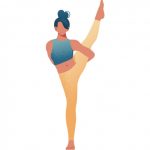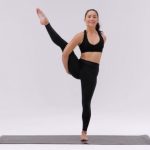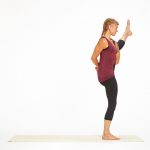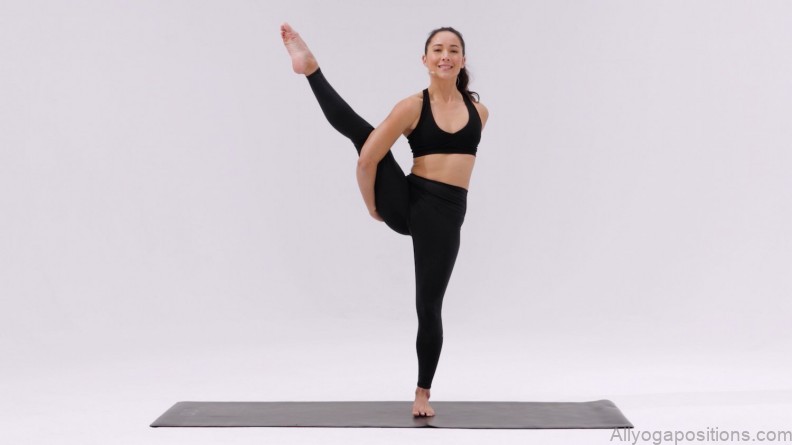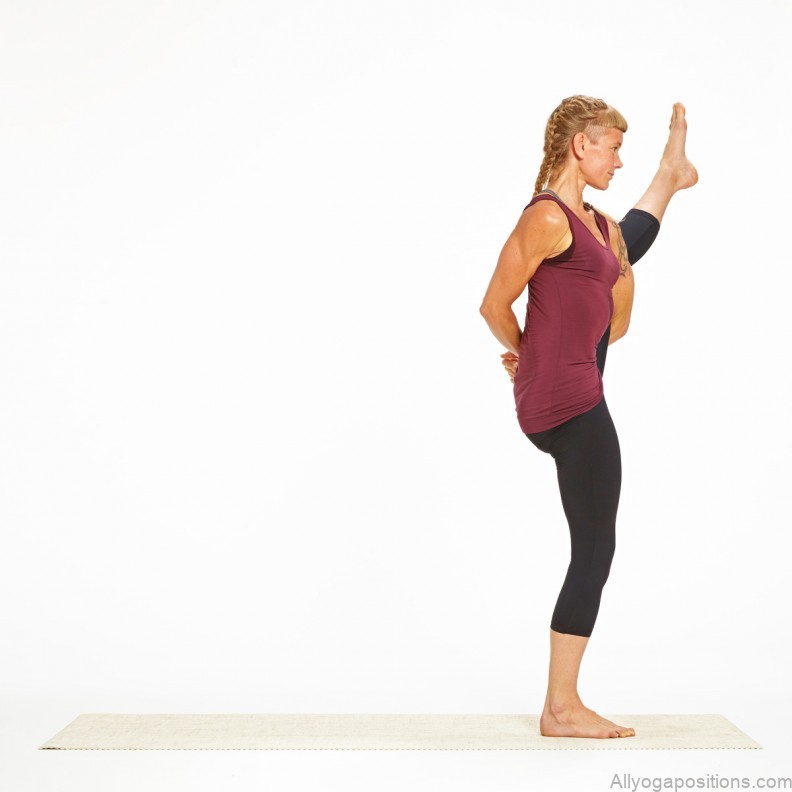Are you looking for a yoga pose that can help you improve your balance, flexibility, and strength? Look no further than Svarga Dvijasana, also known as the Bird of Paradise pose. This standing yoga pose may look complex, but with a little practice and guidance, you can incorporate it into your yoga routine and experience its many benefits.
What is Svarga Dvijasana?
Svarga Dvijasana is a standing yoga pose that is named after the Bird of Paradise flower, which is native to South Africa. It is a challenging pose that requires strength, balance, and flexibility. It is a combination of a standing forward fold, a half-bound lotus pose, and a twist.
To get into Svarga Dvijasana, begin in Tadasana, or Mountain Pose. From there, shift your weight onto your left foot and bend your right knee, bringing your right foot to the top of your left thigh. Take hold of your right ankle with your right hand and your right knee with your left hand. From there, extend your right leg forward and straighten it as much as possible. Twist your torso to the left and extend your right arm up towards the ceiling. Finally, look up towards your right hand and hold for several breaths before releasing and repeating on the other side.
Discover the Benefits of the Svarga Dvijasana Yoga Pose: A Guide for Beginners Photo Gallery
Benefits of Svarga Dvijasana
- Improves balance: Svarga Dvijasana requires a great deal of balance, which can help improve your overall sense of balance and stability.
- Strengthens the legs: Holding the pose requires strength in the legs, particularly in the quadriceps and hamstrings.
- Increases flexibility: The pose requires flexibility in the hips, hamstrings, and lower back. Regular practice can help increase your overall flexibility.
- Promotes mindfulness: The focus required to maintain balance and hold the pose can help quiet the mind and promote mindfulness.
- Enhances the mind-body connection: The pose requires concentration and focus, which can help enhance the mind-body connection.
Precautions and Modifications
As with any yoga pose, it is important to practice Svarga Dvijasana safely and effectively. Here are some precautions and modifications to keep in mind:
- If you have any injuries or conditions that affect your balance or flexibility, it is best to avoid this pose.
- If you have trouble balancing, you can use a wall or chair for support.
- If you have trouble reaching your ankle or knee, you can use a strap or towel to help you reach.
If you’re interested in exploring Svarga Dvijasana further, here are some tips to help you practice the pose safely and effectively:
Warm up: Before attempting Svarga Dvijasana, warm up your body with some gentle stretches and movements. Focus on stretching your hamstrings, hips, and shoulders, as these are the areas that will be most engaged in the pose.
Use props: If you’re having trouble reaching your ankle or knee, use a strap or towel to help you. You can also use a block or chair for support if you’re having trouble balancing.
Focus on your breath: As you hold the pose, focus on your breath. Take deep inhales and exhales through your nose, and allow your breath to help you find balance and stability.
Work on one side at a time: It’s important to work on one side of the body at a time to ensure that you’re properly aligning your body and engaging the correct muscles.
Don’t force it: Remember to listen to your body and only go as far into the pose as feels comfortable. Don’t force yourself into the pose or push yourself beyond your limits.
Incorporating Svarga Dvijasana into your yoga practice can be a challenging but rewarding experience. With its many benefits for balance, strength, flexibility, mindfulness, and the mind-body connection, this standing yoga pose can help you take your yoga practice to the next level. Just remember to practice safely, use props and modifications as needed, and listen to your body. With a little practice and patience, you’ll be able to master Svarga Dvijasana and reap its many benefits.
Conclusion
Svarga Dvijasana may look intimidating, but with practice and patience, it can be a valuable addition to your yoga routine. Not only does it improve balance, strength, and flexibility, but it also promotes mindfulness and enhances the mind-body connection. Remember to practice safely, listen to your body, and seek guidance from a qualified yoga instructor if you need it. With regular practice, you’ll be on your way to experiencing the many benefits of Svarga Dvijasana for yourself.
Table of Contents
Maybe You Like Them Too
- Mastering Virabhadrasana A: The Warrior Pose of Empowerment
- Embracing the Essence of Wide Legged Forward Bend: A Deep Dive
- Unlocking the Power of Prasarita Padottanasana: The Wide-Legged Forward Bend
- The Power and Elegance of the Wide Legged Forward Bend II Yoga Pose
- Mastering the Warrior II Pose: A Deep Dive into Its Benefits and Techniques

